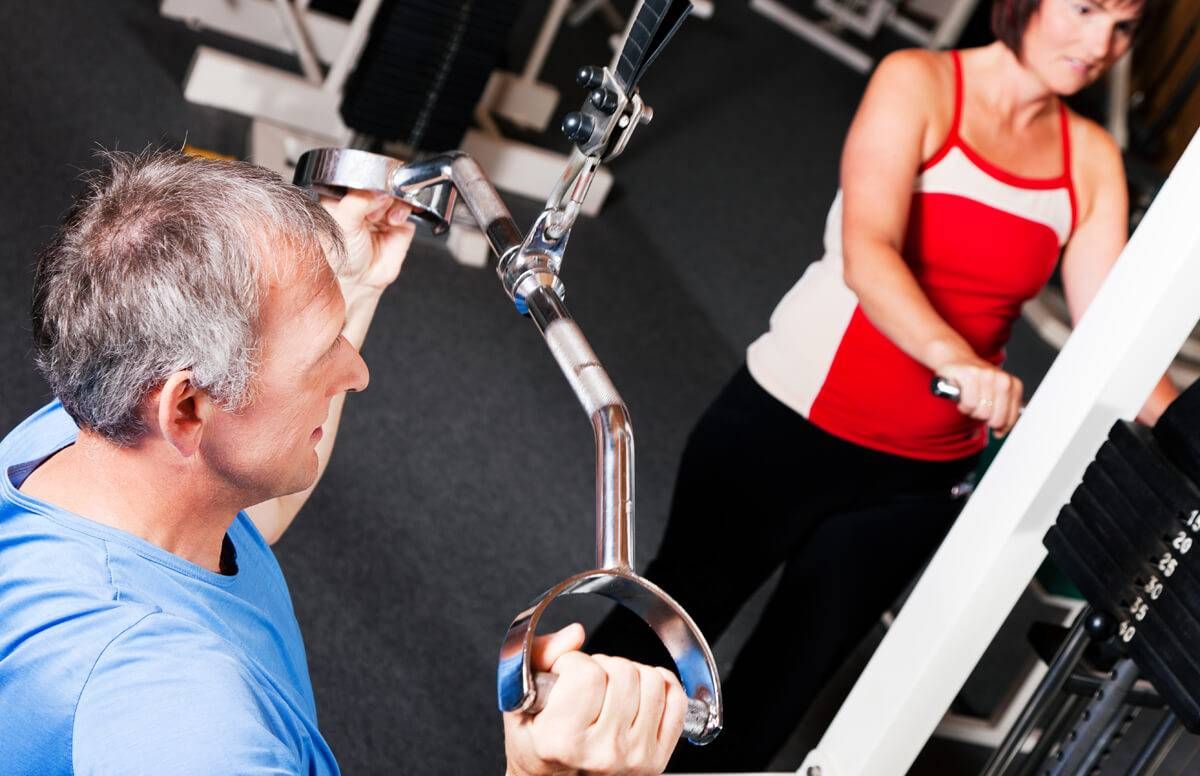Ways to Stay Fit After an Orthopedic Injury or Surgery
Recovery and exercise guidelines to help you hit your stride again
Whether you've been sidelined by a sports injury, an accident or a surgery, the loss of fitness that often follows can be seriously frustrating. Luckily, there are things you can do to help minimize your downtime, maintain your fitness and recover as smoothly as possible.

To round up the best tips and guidelines, I interviewed an active 50-something with firsthand experience and an expert on orthopedic recovery. Despite their different perspectives, they had similar advice to share.
Get Off the Couch
"The biggest thing for people to remember is try to stay as active as they can. A lot of people just don't realize there are a lot of things that they can do, says Jasmine Marcus, a physical therapist who practices in Ithaca, N.Y. She recommends working with your care team as early as possible to map out exactly which activities you can do and when.
This line of questioning should start even before you go into surgery or at the time of triage care in the case of an injury. That's exactly what Julie Sprau, a busy 57-year-old attorney from St. Louis Park, Minn., did prior to her hip replacement surgery.
"In the weeks leading up to surgery, I got a list of gym exercises from my doctor," she says. "They were focused on building as much strength and mobility in my hip joint, to give me the best chance at a quick recovery."
Don’t Overdo It
According to Marcus and Sprau, it's important to be specific. Ask directly about activities you routinely do, whether they are household chores or sports. Even more important: don't return to activity too quickly.
"I followed my doctor's orders one hundred percent," says Sprau, who didn't put an ounce of weight on her affected leg until her doctor said she could.
Said Marcus: "As you start to recover and do more, check in with your care team and make sure what you're doing is safe and appropriate. If you haven't been exercising for a while because of the injury or surgery, make sure you don't do too much too soon, because that can easily lead to re-injury."
Nourish Your Body and Mind
Getting injured or recovering from surgery can be frustrating and even depressing, but you'll only compound the negative impacts if you turn to junk food and alcohol to cheer you up. Instead, make it your mission to use what you eat and drink to fuel your body's recovery.
Eating whole foods should be your top priority, according to the 2015 meta-analysis "Nutritional Support for Exercise-Induced Injuries," published in the New Zealand journal Sports Medicine. Studies have shown that boosting intake of foods high in zinc, vitamins A and C and Omega-3 fatty acids can result in quicker healing.
Also, despite the typical drop in activity following an injury, the healing process burns quite a few calories, so restricting intake isn't always a good idea. It's especially important to get enough lean protein, to eat foods high in fiber and avoid dairy and other foods that can cause constipation, a common side effect of many pain medications.
It's equally important to nurture your mental health. Rather than succumb to frustration, use the down time to enjoy sedentary activities like knitting or reading. This would also be a great period to experiment with meditation; at least one study has shown a negative correlation between stress levels and the speed of healing.
Get Creative
Immediately following an injury or surgery, it might seem like there's nothing you can do, and for the first week or two, this may be the case. But before long, you can, and should, do whatever you're able to do.
"Usually, patients are safe to continue exercising their uninvolved body parts," Marcus says. "This can mean working out their core and arms in the event of a leg injury or switching from walking and running to biking to decrease weight bearing.
"There's also a growing body of research that shows that an injured limb loses less strength if you continue exercising the opposite limb," she continues. "For example, if you break your right arm, but continue exercising with your left arm, your right arm will be better off in the long run."
You may have to get a little creative where exercise is concerned.
"I wanted to bench [press]," Sprau says, "but I couldn't extend my hip the way I normally would lying on the bench. So, my trainer set up a couple of boxes next to the bench and I rested my legs on them. Of course, I wasn't able to lift as heavy, but it was enough for me to maintain some strength and mobility in my upper body."
Exercises to Help Reclaim Your Functionality
In addition to exercising unaffected muscle groups, consider incorporating the exercises below to strengthen key core and stabilizer muscles, improve movement quality and possibly prevent injuries from recurring. Just be sure to discuss specific exercises with your medical care team prior to any activity.
Click on the name of the exercise for a link to instructions and a photo or video demonstration.
- Balance stands: In addition to improving balance, this exercise engages the core and dozens of stabilizer muscles in the upper and lower leg, foot and ankle.
- Clamshells: Weak hips can be the culprit for some knee and lower back injuries. Do this simple exercise to strengthen key hip movers.
- Back extensions: Like weak hips, weak lower back muscles can compromise the lower and mid-back and contribute to poor form when walking or running.
- Planks: The Plank, in any of its many varieties, is one of the best total core exercises. If you're new to planks, start on your knees or even against a wall.
- Hip hinge: The hip hinge is an important precursor movement for many strength exercises and activities of daily life. Unfortunately, weak hip flexors and tight hamstrings, caused by too much sitting, have made our bodies forget how to do this basic movement.
Injuries and surgeries can be a real drag, but by doing what you can when the time is right, and focusing on a few key exercises, you'll be ready to tackle life at full speed again in no time.


